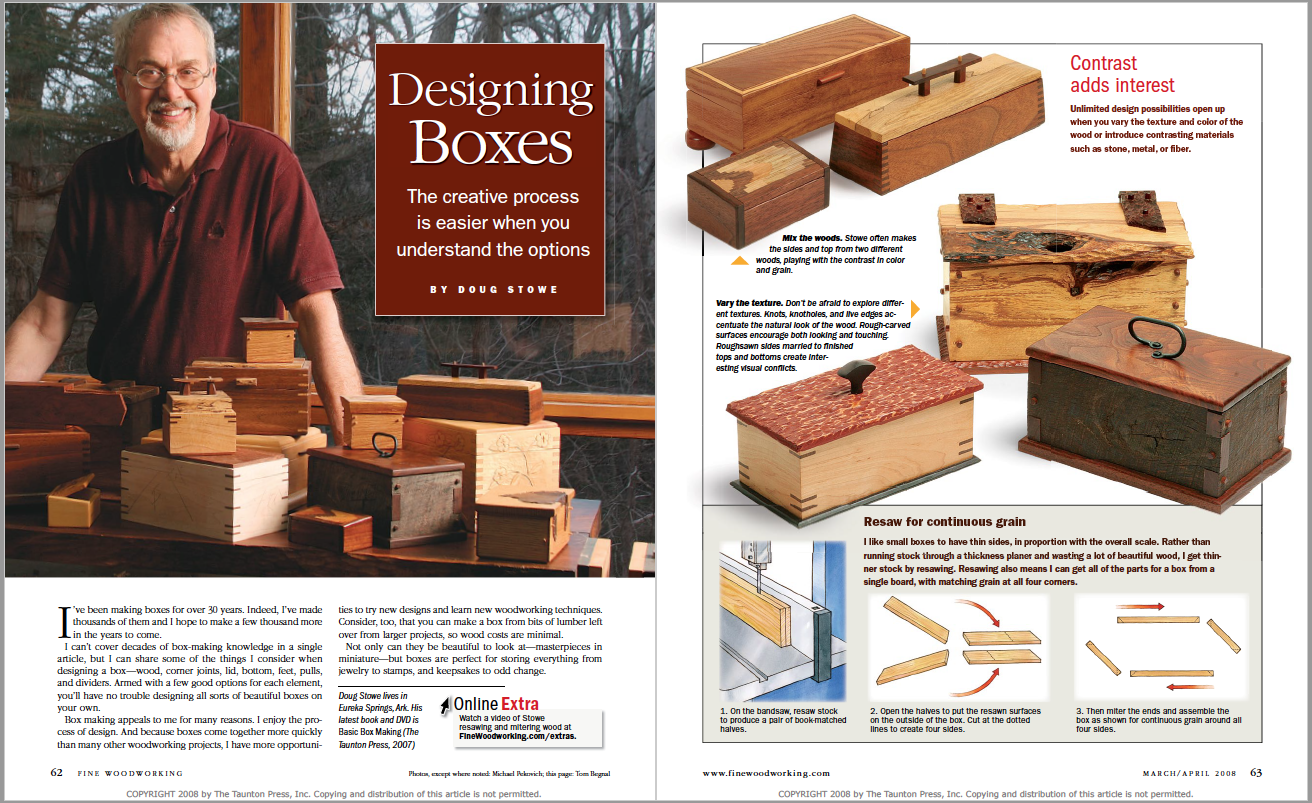Designing Boxes
The creative process is easier when you understand the options.

Synopsis: When it comes to box making, Doug Stowe could write a book. In fact, he’s written several, and has built thousands of boxes over the past 30 years. In the process, he’s developed a huge repertoire of tips and techniques. Here, he shares some of his favorites, things to consider when designing your own box — wood choices, corner joints, lid, bottom, feet, pulls, and dividers. Armed with a few options for each of these elements, you’ll soon be making all sorts of beautiful boxes on your own.
I’ve been making boxes for over 30 years. Indeed, I’ve made thousands of them and I hope to make a few thousand more in the years to come.
I can’t cover decades of box-making knowledge in a single article, but I can share some of the things I consider when designing a box—wood, corner joints, lid, bottom, feet, pulls, and dividers. Armed with a few good options for each element, you’ll have no trouble designing all sorts of beautiful boxes on your own.
Box making appeals to me for many reasons. I enjoy the process of design. And because boxes come together more quickly than many other woodworking projects, I have more opportunities to try new designs and learn new wood working techniques. Consider, too, that you can make a box from bits of lumber left over from larger projects, so wood costs are minimal.
Not only can they be beautiful to look at—masterpieces in miniature—but boxes are perfect for storing everything from jewelry to stamps, and keepsakes to odd change.
Contrast adds interest
Unlimited design possibilities open up when you vary the texture and color of the wood or introduce contrasting materials such as stone, metal, or fiber.

Choose corner joints early on
Most corner-joint options are more than strong enough to hold together a relatively light box. And joints with minimal strength, like butt joints and miter joints, are easily reinforced. So, most times, I base my choice of corner joint on appearance rather than strength. Splined miters add interest to the corners, especially when the splines are made from a wood that contrasts with the box sides (left). A hidden, vertical spline works well if you don’t want to disturb the appearance of the grain as it wraps around the corners. If the stock is thick enough, you can make the job a little easier by substituting biscuits for splines (center). A more rustic appearance can be had by adding dowel pins to a rabbet joint (right).
 From Fine Woodworking #197
From Fine Woodworking #197
For the full article, download the PDF below:
Fine Woodworking Recommended Products

Suizan Japanese Pull Saw

Blackwing Pencils

Circle Guide








Log in or create an account to post a comment.
Sign up Log in